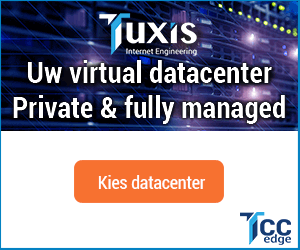Lenovo is notable among storage array makers for a recent rapid rise in market share, and the prominence of the partnering strategy it has employed to get there.
While it lacks some things that most other storage makers possess – namely its own cloud, or cloud offer via the hyperscalers, or a container management platform – it does cover the full range of flash and disk storage requirements from entry-level/SME to high-end artificial intelligence (AI) use cases.
In recent years, it has nearly doubled storage system market share and gone from eighth in the rankings to fourth by 2023, according to IDC. Meanwhile, it is top dog in storage systems of less than $25,000, also according to IDC.
It has achieved much of this with a comprehensive range of partnerships. IBM came first and endures via the laptop lines, but also in storage with SpectrumScale and TS tape products. Meanwhile, re-badged NetApp hardware forms a very significant part of Lenovo’s storage offer.
There are also Lenovo-branded storage products that make use of partnerships with Nutanix (hyper-converged), Microsoft Azure (hybrid cloud on-site systems), VMware (vSan), Weka (scale-out NAS), and Cloudian (object storage).
In this article, we look at the origins of Lenovo, its key storage products, its place in the markets, its approach to the cloud, containers, and consumption models of storage purchasing.
Where did Lenovo come from?
Lenovo was formed in Beijing in 1984, then named as “Legend”, by a team of engineers led by Liu Chuanzhi and Danny Lui. It initially specialised in televisions but later diversified towards computing. It subsequently received permission to form a subsidiary in Hong Kong and moved its HQ there some time after.
By 1990, the company had started to make computers, with early efforts including a mainframe and IBM-compatible machines aimed at the Chinese market. A first IPO in 1994 in Hong Kong saw the company go public, and it had captured nearly half of the Chinese domestic market by 1996.
It re-branded to the name Lenovo in 2003 – “Le” from it’s previous name Legend, and “novo” from the Latin for new – and in 2005 it bought IBM’s personal computer business with its ThinkPad laptops and ThinkCentre desktop lines. IBM still has a share in Lenovo, which was gained during that deal.
Since then, it left then re-joined the smartphone market, formed a joint venture in the PC market with the Japanese firm NEC, and later bought IBM’s x86 server business.
Its first foray into data storage was a joint venture in 2013 with EMC, which took the existing US-based company Iomega and re-branded its products into the LenovoEMC brand. All those products have since been retired.
In 2017, Lenovo partnered with storage virtualisation stalwart DataCore and used its software in its storage products.
In 2018, Lenovo partnered with NetApp in an arrangement that stands to this day.
Lenovo has not been subject to sanctions or anything like the same security concerns as fellow China-based company Huawei, but it has been subject to some accusations about bloatware, data exploits and security vulnerabilities.
How does Lenovo rank against other storage players?
In 2023, IDC ranked Lenovo 4th in terms of market share with 7.7%. That’s up significantly from 2022 when Lenovo market share was 4.1% and last of the top eight storage vendors – we’ve not covered Lenovo previously in our top five or six of storage array makers.
Top of the 2023 rankings is Dell with 26.1% market share, with Huawei (9.7%) and HPE (8.3%) above Lenovo. Behind Lenovo come NetApp (7%), Pure Storage (6.1%), Hitachi Vantara (4.9%) and IBM (4.7%).
Given Lenovo’s rise in the storage array supplier rankings, it’s no surprise that is mirrored by healthy revenues for its Infrastructure Solutions Group (ISG), of which its storage business is a part. It closed its 2022 fiscal year with more than $7bn in revenue, up from $5.5bn in 2020. Lenovo’s ISG forms about 10% of its entire corporate revenue.
Lenovo has declared it wants to be number one in storage infrastructure. In 2023 – the same period as the overall rankings above – Lenovo was number one in IDC’s price bands 1 to 4, which covered external storage equipment of less than $25,000, which represented 61% of all storage devices sold globally at the time.
In the Fortune Global 500 rankings, Lenovo comes in at number 196.
What are Lenovo’s key storage products?
Lenovo’s storage array products comprise of:
- ThinkSystem DG arrays, which include the currently available DG5000 and DG7000, with DG5200 and DG7200 upgrades coming soon. They run NetApp’s Ontap operating system and are based on NetApp C-Series AFF arrays.
- The DG5000 is a 2U all-flash QLC array that can take up to 48 15.36TB drives for a maximum capacity of 737TB and offers file and block access with Ethernet and Fibre Channel connectivity. The DG7000 scales to 1.47PB.
- Lenovo DM series arrays are also OEMed NetApp hardware. They come in NVMe and SAS flash and disk variants and range from 737TB raw capacity to multi petabytes and offer block, file and object access.
- DE series arrays are based on NetApp’s E and EF series arrays, which run the Santricity OS rather than Ontap.
- Lenovo also offers software-defined – albeit appliance-based – and hyper-converged products.
- The ThinkAgile HX series is based on Nutanix software and Lenovo server hardware.
- ThinkAgile MX and SMX products are based on Microsoft Azure’s Arc and Stack platforms that allow infrastructure to be built across the datacentre and cloud.
- ThinkAgile VX bundles Lenovo servers with VMware vSAN to provide a hyper-converged solution.
- Lenovo High-Performance File System uses Weka Data Platform storage software to provide scale-out NAS targeted at AI use cases.
- Lenovo DSS-G provides IBM SpectrumScale scale-out storage on its ThinkSystem V3 servers.
- Lenovo Object Storage uses Cloudian object storage software.
- Lenovo Ceph Storage Solutions uses ThinkSystem compute nodes and comes as object storage or unified (block, file and object).
- Lenovo also sells D series JBOD expansion units and IBM TS series tape storage hardware.
- Lenovo targets AI workloads with configured bundles that include AI Starter Kits and GPT-in-a-Box solutions.
- In another AI play, Lenovo announced in January that it would buy high-performance block storage array maker Infinidat, but that deal is yet to progress further than such announcements – in public, at least.
What markets and workloads does Lenovo target?
As mentioned above, Lenovo holds a commanding advantage in the lower-end of the storage array market. It offers value-for-money systems, largely based on third-party supplier storage technology and its server hardware.
Having said that, it also underwent a major refresh earlier this year aimed at providing AI-ready storage and hyper-converged infrastructure for customers of all its arrays, from entry level to multi-petabyte scale.
How does the cloud fit Lenovo strategy?
Lenovo has no cloud storage of its own, except for a branded version of Dropbox. It also lacks any kind of over-arching hybrid cloud-capable control plane. But it does sell storage arrays that, for example, use Microsoft Azure products that bridge the datacentre and cloud locations.
What is the Lenovo container strategy?
Lenovo offers configured stacks aimed at running Kubernetes, such as via Azure Kubernetes Service, Red Hat OpenShift and Canonical. But it lacks the kind of management platform for containerised applications that other vendors use to help customers manage container storage, data protection, and so on.
What consumption models of purchasing does Lenovo offer?
Leno’s pay-as-you-go offer is called Truscale. It aims to provide a cloud-like experience for on-premise infrastructure.
TruScale offers consumption-based storage billing on an average TB per month, non-disruptive migration, monitoring and alerting, and management. Lenovo manages the hardware refresh cycle. Customers can pay for different levels of provision that vary by levels of capacity growth possible, whether tech refreshes are included and the duration of terms.
Lenovo also offers Truscale for a variety of workloads, such as lenovo Truscale AI, Truscale for high-performance computing, Truscale backup with Veeam, hybrid cloud with Microsoft Azure and for VMware.













